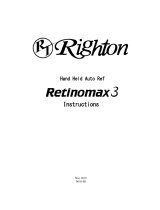
Part Number: PFG01024 Page 6 of 12
Revision A Revision Date: August 2016
continuous hours and the patient should be asked to identify any problems which
might be occurring related to contact lens wear.
d. Review proper lens care and handling instructions and wearing schedule.
e. With the lenses in place on the eyes, evaluate fitting performance to assure that
CRITERIA OF A WELL FITTED LENS continue to be satisfied. (See Section
entitled CLINICAL ASSESSMENT on page 8). Examine the lenses closely for
surface deposition and/or damage. Replace lenses if deposits develop which cannot be
removed.
f. After lens removal, conduct a thorough biomicroscopy examination.
1. The presence of vertical corneal striae in the posterior central cornea and/or
neovascularization is indicative of excessive corneal edema.
2. The presence of corneal staining and/or limbal-conjunctival hyperemia can be
indicative of an unclean lens, a reaction to solution preservatives, excessive
lens wear, and/or a poorly fitting (tight) lens.
3. Papillary conjunctival changes may be indicative of an unclean and/or
damaged lens.
g. Compare best corrected visual acuity and keratometry readings to the baseline
findings. Excessive changes from baseline are indicative of corneal edema and/or a
poorly fitting lens.
If any of the above observations are judged abnormal, various professional judgments
are necessary to alleviate the problem and restore the eye to optimal conditions. If the
CRITERIA OF A WELL FITTED LENS are not satisfied during any follow-up
examination, the patient should be re-fitted with a more appropriate lens.
IN OFFICE CARE OF TRIAL LENSES
Eye care practitioners should educate contact lens technicians concerning proper care of trial lenses.
Each contact lens is shipped sterile in a blister pack with sterile buffered isotonic saline. Hands should
be thoroughly washed and rinsed and dried with a lint free towel prior to handling a lens. In order to
insure sterility, the blister pack should not be opened until immediately prior to use.
If the lenses are to be reused in a diagnostic procedure or dispensed to a patient, the lenses
MUST be surface cleaned and disinfected. Diagnostic lenses may be disinfected by chemical (not
heat) disinfection systems. To ensure adequate disinfection, follow the instructions accompanying the
disinfecting solution. DO NOT alternate or mix disinfection systems.
If lenses are not to be used immediately following disinfection, leave them in the closed/unopened
case. Refer to the solution instructions for information on storage of lenses.













